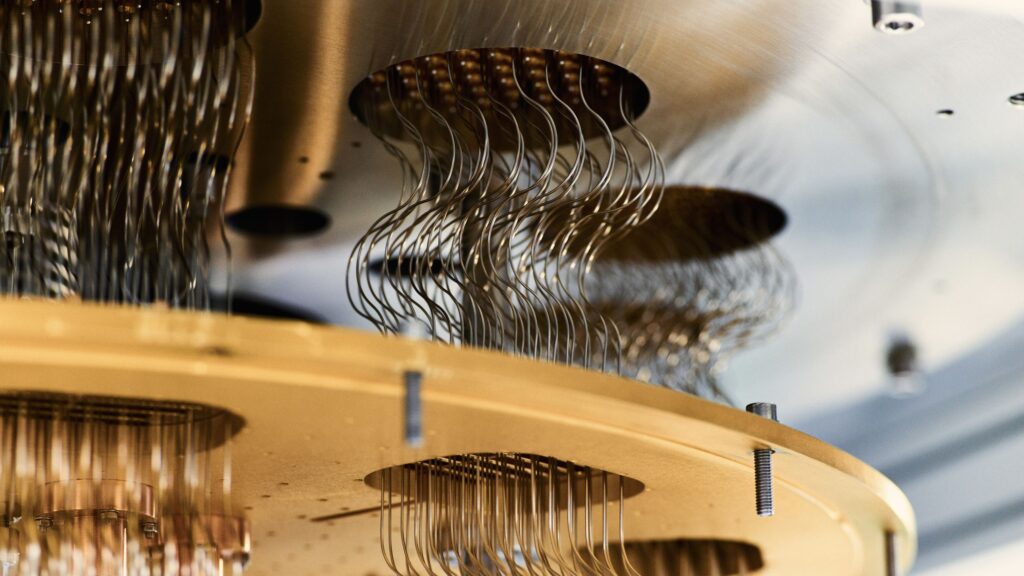Scientists at Google have created a new algorithm that can solve problems on quantum processors 13,000 times faster than the world’s fastest supercomputers. They say this brings them one step closer to using quantum computers in drug discovery, materials science, and many other scientific applications.
Researchers say the new algorithm, called “Quantum Echoes,” is a breakthrough because it is the first to achieve the benefits of quantum while being independently verifiable by running it on a separate quantum computer.
you may like
In doing so, they discovered previously unknown details about the atomic spacing and structure of the two molecules, which have 15 and 28 atoms, respectively. [4-13C]-Toluene and [1-13C]-3′,5′-dimethylbiphenyl (DMBP).
Although the system used in this experiment was small (15 qubits), the researchers said future studies will allow researchers to simulate molecules four times larger. This is a scale that is impossible with classical simulations.
echo from the past
The new study builds on decades of research that began in the 1980s with the work of Michel Devoret, a physics professor at the University of California and lead scientist for quantum hardware at Google Quantum AI. Devore is a co-recipient of the 2025 Nobel Prize in Physics for this work and a co-author of the study.
“Today, we are announcing this breakthrough algorithm, which actually marks a new milestone in that the calculations are performed and the quantities are verifiable. So even if another quantum computer performed the same calculations, the result would be the same. So this marks another step towards full-fledged quantum computing,” Deboré said at a press conference. “Because this quantum echoes algorithm is verifiable, not only can its results be obtained on another similar quantum computer, but it also offers a quantum advantage: it makes calculations much more time-consuming than traditional hardware.”
The quantum echo algorithm works in several stages and is equivalent to an advanced echo in which a signal is sent to a quantum system and reversed to listen to the returning “echo”. Everything is amplified by constructive interference, a phenomenon in which quantum waves combine and become stronger.
you may like
First, the scientists performed a series of operations, or quantum gates, on an entangled 105-qubit array on the Willow QPU. Then, one qubit was perturbed, or deviated, before performing the exact same operation in reverse. The result is an interesting “butterfly effect” that can be used to reveal information about quantum systems. The scientists then used this algorithm to measure the distance between atoms in two molecules.
To confirm the algorithm’s performance on Willow and traditional supercomputers, the scientists conducted rigorous “red team” testing, borrowing from cybersecurity techniques to verify the robustness of the results. These tests are equivalent to 10 years.
“Certainly it’s a challenge for skeptics to try to replicate the results classically,” Scott Aaronson, chair of the computer science department at the University of Texas at Austin, told Live Science. “Compared to previous demonstrations of quantum supremacy, the big advantage this time is that the output is a single number rather than a sample from a distribution, so it can in principle be tested efficiently. If we don’t use a classical computer, we use at least a second quantum computer.”
Aaronson added that verifiable quantum supremacy is one of the biggest challenges in the field. He pointed out that Google’s goal in both new studies was not to solve commercially useful problems, but to gain a clear advantage over classical computers and allow another quantum computer to independently verify the answers.
Google launched its Willow quantum computing chip last December. The new processor demonstrated that errors occur exponentially less as the number of qubits increases, marking an important milestone in quantum computing research. But even if machines can scale to the millions of qubits needed to surpass classical computing, hardware improvements alone will not be enough. That’s because, as Mi pointed out, software and hardware components must work together to find the most efficient route to solving a problem.
Google scientists claim that we could begin to see practical applications only possible with quantum computers within five years. However, the hardware needs to be scaled up so that the machine can operate with millions of qubits. This is difficult to imagine today, since the most powerful quantum computers have only a few hundred or thousands of qubits.
Source link

